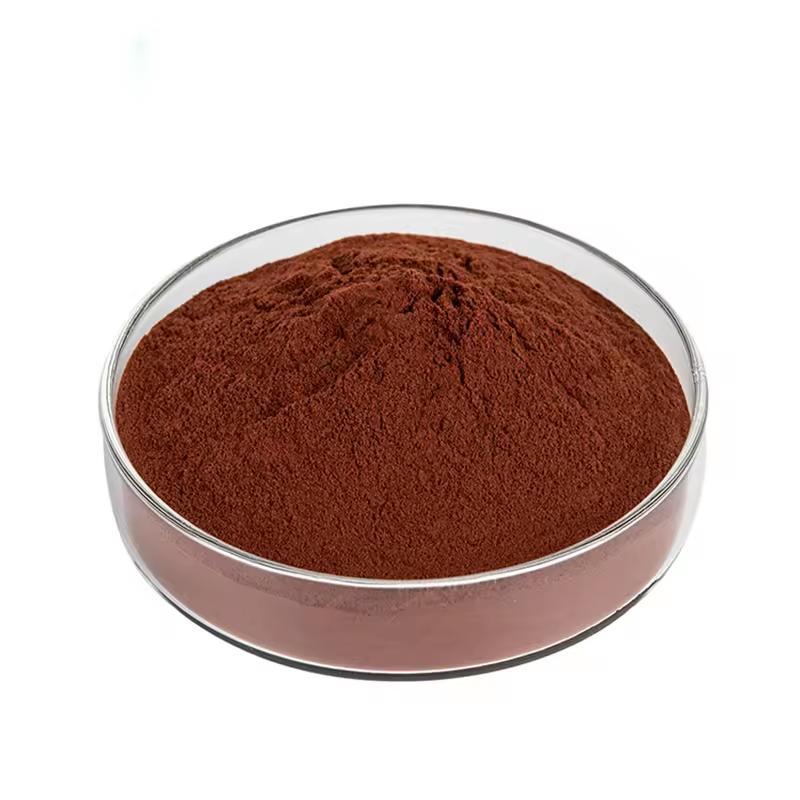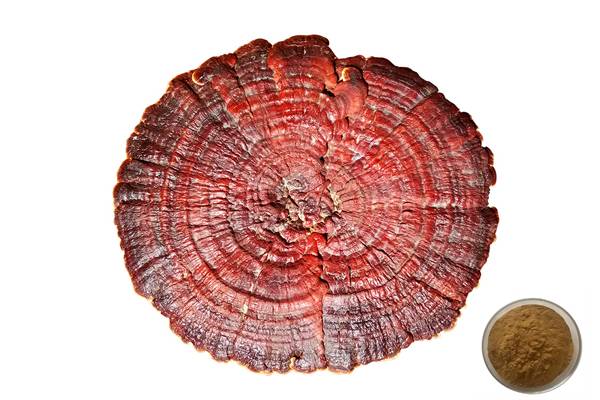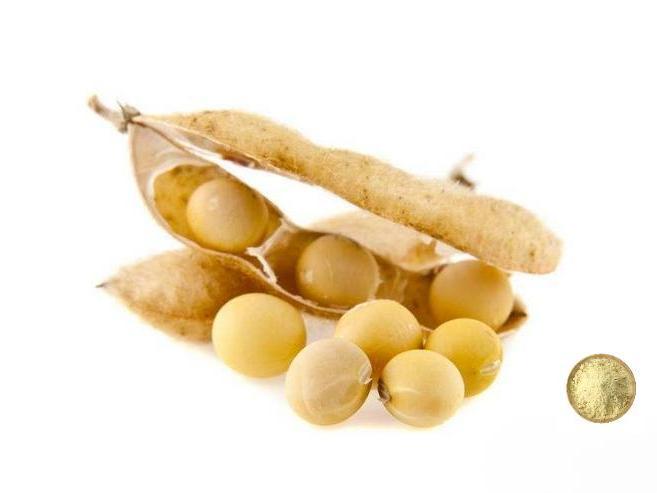Grape Seed Extract Powder 95% Proanthocyanidins
Source:Grape Seed
Latin Name:Vitis vinifera L.
Active Ingredients:Proanthocyanidins
Assay:95%
Testing Method:UV
Appearance:Red-Brown Fine Powder
Pesticide Residue:Comply with (EC) No 396/2005 Standard
- Description
- Data Sheet
- Certificate
-
What is Grape Seed Extract Proanthocyanidins?
The grape seed extract is a class of polyphenols extracted and isolated from grape seeds, mainly composed of proanthocyanidins, catechins, epicatechins, gallic acid, epicatechin gallate and other polyphenols.
The chemical composition of grape seed proanthocyanidins is very complex, being a mixture of different amounts of catechins (catechin) or epicatechins (epicatechin) combined, of which there are four monomers: gallic acid, catechin, epicatechin, and epigallocatechin 3-O-gallate).
Green Spring Technology supplies Grape Seed Extract Powder 95% Proanthocyanidins by supercritical CO2 extraction method. It maintains the activity and stability of proanthocyanidins and improves the extraction efficiency without adding organic solvents, which are green and safe.
Established in 2000, Green Spring Technology has been committed to developing and supplying high quality plant extracts, it is a leading biotechnology company in China. Our products are manufactured to the highest international industry standards, complying with EU EC396, EU 2023/915 and the highest solvent residue standards. Green Spring has obtained Halal, Kosher, COSMOS, BRC, IFS, FDA, ISO and many other certifications. Authoritative third party test reports are available.
Specification:
Product Name
Grape Seed Extract
Latin Name
Vitis vinifera L.
Source
Grape Seed
Active Ingredients
Proanthocyanidins
Specification
95%
Testing Method
UV
Appearance
Red-Brown Fine Powder
Pesticide Residue
Comply with (EC) No 396/2005 Standard
Regulation:
It conforms to EU regulations.
Looking for a Quotation?Benefits:
Antioxidant
Yijuan Liu et al. investigated the natural antioxidant activity of grape seed extract, mainly testing the scavenging rate of DPPH free radicals and comparing it with the natural antioxidants VC, VE, catechin, propolis, and the synthetic antioxidants BHT (butylhydroxytoluene), TBHQ (tertiary-butylhydroquinone) and PG (propyl gallate). The experimental results showed that the order of DPPH radical scavenging ability at the same mass concentration was as follows: grape seed extract, catechin > VC > VE > propolis, and PG > GSE > TBHQ > BHT.
Grape seed extract antioxidant mechanism: ① through the phenolic hydroxyl group and free radical dehydrogenation reaction to generate stable semiquinone radicals, thereby interrupting the chain reaction; ② through the role of GSE reducing power to give electrons directly and scavenging of free radicals; ③ chelate the initiation of lipid peroxidation of metal ions, thereby cutting off the chain reaction of free radicals, play an antioxidant role.
Cardiovascular Protection
The proanthocyanidins in grape seed extract help to protect the cardiovascular system by lowering blood cholesterol levels, reducing blood viscosity, and increasing the elasticity of blood vessels, which helps to prevent cardiovascular disease.
Whitening
Wang Peng et al. investigated the inhibitory effect of grape seed extract on intracellular melanin synthesis, mainly observing the changes in melanin production as well as the expression and activity of tyrosinase after adding different mass concentrations of GSE to the cell culture solution. After treating the cells with arbutin solution at a mass concentration of 100 mg/L, the inhibition rate of intracellular melanin synthesis reached (31.08±0.37)%. Whereas, the inhibition of intracellular melanin synthesis reached (50.05±0.21)% in the group with the same mass concentration of grape seed extract. Grape seed extract showed significant melanin synthesis inhibition in a mass concentration dependent manner.
Grape seed extract significantly inhibited melanin synthesis in B16 cells, with the possible mechanism of action being through down-regulation of tyrosinase protein expression levels and enzyme activity thereby inhibiting melanin synthesis in mouse melanoma cells.
Spot Removal
As human skin is subjected to a large number of free radicals and the ability to fight free radicals decreases, human skin ages and wrinkles at an accelerated rate. The grape seed extract is a highly effective antioxidant and free radical scavenging beauty care product and is easily absorbed by the skin's connective tissue, which can moisturize the skin, reduce skin diseases and wrinkles, as well as help to eliminate skin discoloration, chloasma and other various spots.
Enhancement of Immunity
The antioxidant components in grape seed extract can effectively fight against free radicals and reduce the damage caused by free radicals to the body, thus strengthening immunity and resistance, effectively preventing heart disease, diabetes and atherosclerosis.
Applications:
In Cosmetics:
Proanthocyanidins in grape seed extract have unique physicochemical properties and physiological activities, and have a variety of applications in skin care products, such as antioxidant, anti-aging, sun protection and whitening, and astringent moisturizing, etc., which have a broad market and application prospects in the emerging cosmetic field.
For Healthcare Products:
Proanthocyanidins in grape seed extract have strong antioxidant and free radical scavenging abilities. It can improve human microcirculation, anti-mutagenesis, anti-fatigue, anti-mutagenesis, anti-tumor, anti-inflammatory, and anti-aging effects. Experiments have shown that grape seed extract can reduce the expression of matrix metalloproteinase mmp-1 in the skin, thus achieving the repair of DNA damage as well as fading the tear troughs around the eyes and other effects. At present, grape seed extract proanthocyanidins have been approved by the Chinese Ministry of Health as raw materials for healthy food.
-
Download
Grape Seed Extract Powder 95% Proanthocyanidins COA


 English
English French
French Spanish
Spanish Russian
Russian Korean
Korean Japanese
Japanese










